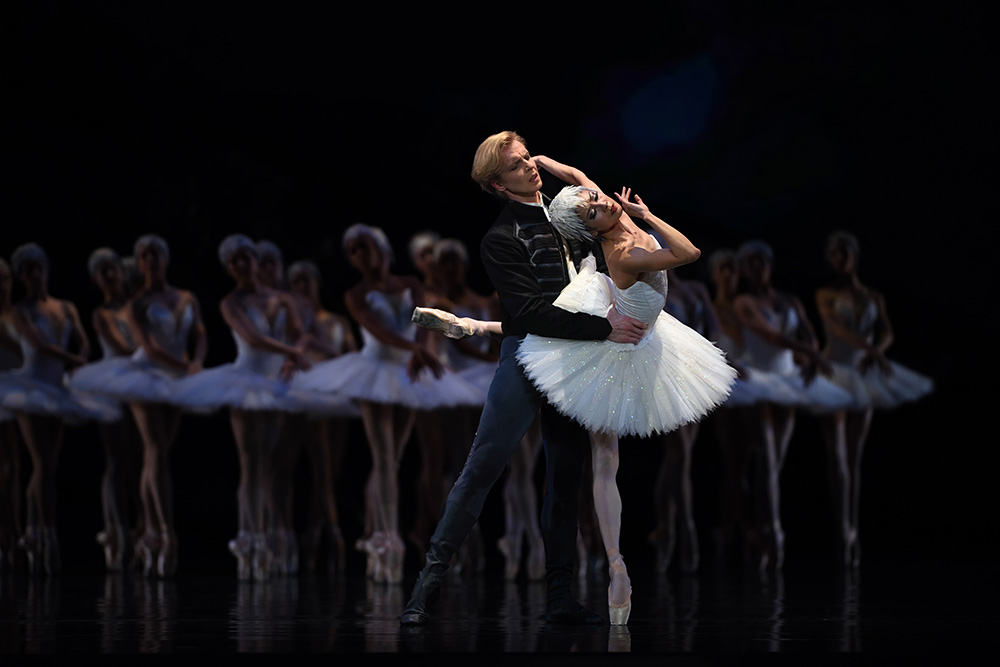
(© Erik Tomasson)
The closing scene of the ballet, Swan Lake, carries a real-life poignancy that can be hard to capture in 19th-century story ballets. In the ghostly light of a full moon against a lake, lovers Siegfried and Odette clash with evil sorcerer Von Rothbart in a fight to the death, as Tchaikovsky’s dramatic music builds to a climax. Every time I attend a performance—now numbering in the double digits—I’m as spellbound, as emotionally gutted, as if it were my first Swan Lake. The musical theme changes from minor key to major, an abrupt turnabout that lets us know that goodness will prevail despite the odds, as Siegfried and Odette declare their eternal love. Tchaikovsky’s music soars and swells, revealing triumph amid terrible pain. The scene is searing, unforgettable. The entire ballet is. For someone like myself who reveres both ballet and classical music, Swan Lake represents the pinnacle of great art.
The artfulness of Swan Lake and its continued success today derive from many components. The music, the choreography, sublimely talented dancers and orchestral accompaniment, all play their part. The story’s themes of loss and redemption, the struggle between good and evil, hold a universal appeal. How interesting, then, to consider the ballet’s bumpy inception. Pyotr Tchaikovsky went to his grave thinking the ballet and his music had been, if not an unequivocal failure, certainly not the success he’d hoped. How painful his disappointment must have been. But he was an artist, brimming with high emotion. For him, pain was part of the job.
Maybe that’s why Tchaikovsky’s music has always deeply affected me. Imbued in it are pain and exhilaration, and everything in between. The same could be said for Swan Lake. For ballet in general. Perhaps all works of great art that hold us spellbound. Which leads me to wonder: does all good art require suffering?
More on this question later. First, let’s look closer at the original 1877 Swan Lake, which, for all its beauty and appeal, was an awkward production to launch. Vladimir Begichev, director of the Moscow Imperial Theatre, had commissioned Tchaikovsky to write the score. It was Tchaikovsky’s first foray into ballet music, having established himself as an acclaimed symphonist. He had to be cajoled, in truth, because writing for the ballet was considered something for lesser composers, not ones of distinction. Tchaikovsky had a big, bold sound, rife with emotion, but his score was not a hit with the dancers, who complained it was too operatic and too difficult to follow. The kind of ballet music they preferred was rhythmically clear and gentle on the ears, containing simple yet decorative melodies. Julius Reisinger, the Bolshoi’s ballet master and choreographer, disliked and fought against Tchaikovsky’s score as well. A second-rate choreographer from Leipzig with few friends within the Bolshoi, Reisinger was better known for his failures than his successes, and Swan Lake proved to be no exception. The ballet’s premiere in February 1877 produced tepid praise (for Tchaikovsky’s music) at best, scathing criticism (for Reisinger’s choreography) at worst. The ballet’s dark finale was over-the-top pathos, as former dancer-turned-historian Jennifer Homans chronicles in her book, Apollo’s Angels:
At the end, a crashing storm and terrible flood signal doom, with great undulating [canvas] waves and ‘an unimaginable din and uproar’ that resembled ‘the explosion of a powder magazine.’ In desperation the prince tears off Odette’s crown, which is her only protection from the evil owl [the villain, who is her wicked stepmother]. Consumed in guilt and grief, the erstwhile lovers are swept into the waters and drowned. There is no redemptive apotheosis, as there later would be, but instead a vision of a cruel and indifferent fate: the lovers perish and the moon shines through the clouds ‘and on the calm lake appears a band of white swans.
The production, needless to say, was not a grand success.
Fast forward several years. The Bolshoi Theatre’s Swan Lake had been shelved and Tchaikovsky had found more fertile terrain working with Ivan Vsevolozhsky, Director of Imperial Theaters in St. Petersburg. Along with ballet master and choreographer Marius Petipa, the three produced The Sleeping Beauty, which premiered in 1890 at the Mariinsky Theatre, and was hailed as a great success. This was followed closely by The Nutcracker, adding Petipa’s second in command, Len Ivanov, to the equation. Talk of a Swan Lake revival arose between Tchaikovsky, Vsevolozhsky and Petipa. It sounded promising, but before they could make it happen, in November 1893, Tchaikovsky unexpectedly passed away.
This must have come as an incalculable loss to Vsevolozhsky, Petipa and Ivanov, on both a professional and personal level. Ivanov, as a tribute, fashioned new Swan Lake choreography for the ballet’s lakeside final act. It was performed in St. Petersburg in February 1894, produced by Vsevolozhsky in Tchaikovsky’s honor. This spirit, along with the performance’s positive reception, surely provided the momentum for Vsevolozhsky, Petipa and Ivanov to move forward in restaging the entire ballet. It was a gift to their departed friend, one that would eventually become a gift to the ballet world.
Vsevolozhsky contacted Tchaikovsky’s younger brother, Modest, asking his help in rewriting the libretto. Riccardo Drigo, the St. Petersburg Imperial Theater’s chief conductor and composer, was asked to alter and shorten Tchaikovsky’s score. Petipa, himself suffering from poor health and family difficulties, split the choreography with Ivanov. He took the court scenes and delegated the lakeside scenes to Ivanov. This worked surprisingly well; it lent a greater texture–a sort of invisible tension, to what is a rather uncomplicated story.
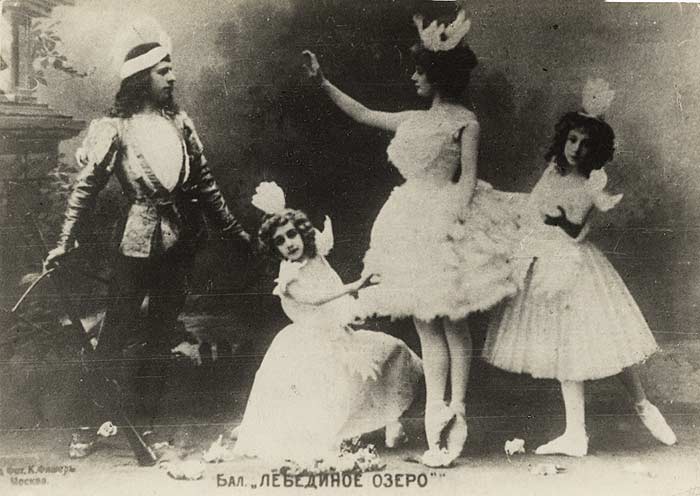
This production of Swan Lake was a decisive success, one that grew in popularity with the passing years. Indeed, few productions and ballets hold such perennial appeal, the Petipa/Ivanov choreography so exemplary, serving as the foundation for countless stagings of Swan Lake.
The ballet’s main character, Odette, is another fascinating study in beauty-meets-suffering. In the story, Von Rothbart, an evil sorcerer, has cast a spell on the innocent Odette, forcing her to live as swan by day, taking on human form by night. Only a vow of true love can break the spell. Siegfried appears at the lakeside, a prince set to celebrate his 21st birthday, restless and troubled after being told by his mother he must choose a bride at the next night’s ball. He’s deeply drawn to Odette’s beauty and sensitivity, knowing that here stands the true-love experience his heart craves. Odette explains her predicament and he promises to vow his eternal love. But the next night at the ball, Von Rothbart presents his daughter Odile magically disguised as Odette. The calculating Odile dazzles the gullible Siegfried with her dancing, her fire, prompting him to declare that this is the woman he chooses. An instant later, Von Rothbart and Odile jeeringly reveal the deception, and Siegfried understands he has fatally betrayed Odette.
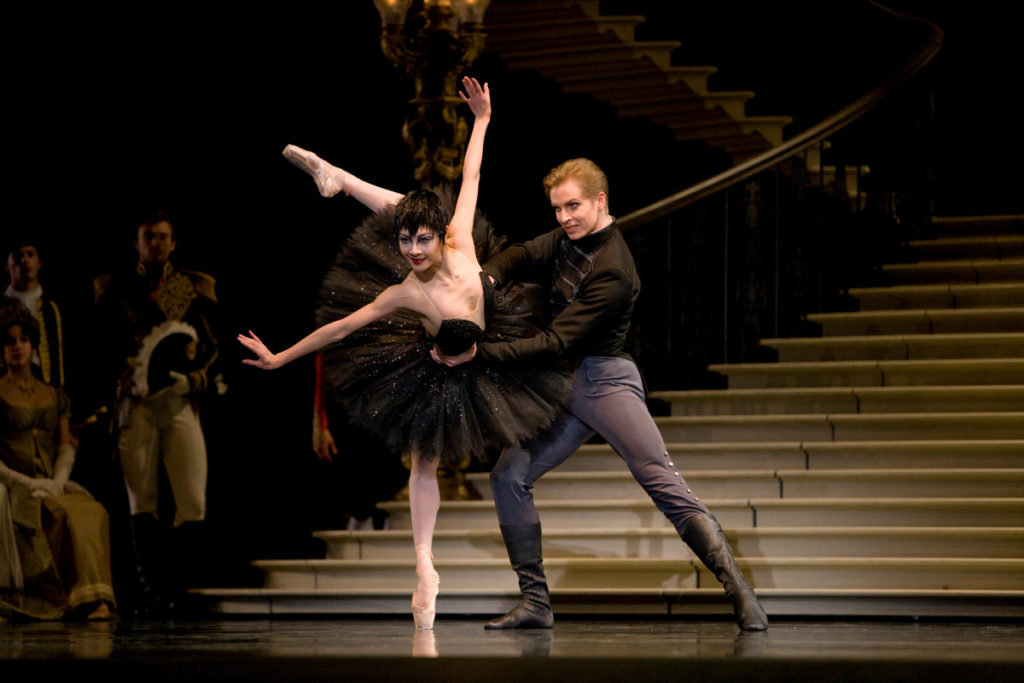
In Act III, a grieving, repentant Siegfried returns to the lake and tries to apologize to a grieving Odette, to no avail. Darkness, in the form of Von Rothbart, has prevailed. But when Von Rothbart rejoins them, Siegfried fights back. Odette then leaps to her death rather than remain a swan forever, and Siegfried, to prove his love and devotion, follows suit. Which destroys Von Rothbart’s magic and he, too, dies.
There are different endings; sometimes only Siegfried dies. Other times the lovers live and Von Rothbart dies. Yet no matter how it ends, what remains constant is Odette’s sorrow, which becomes something luminous and beautiful. She is a haunted, haunting character, utterly unforgettable.
Let’s set story ballets aside and examine the real-life strife of being a ballet dancer. The average person has no idea how much physical pain a smiling ballerina will endure, and the lead role of Odette/Odile in Swan Lake is among the most challenging in the entire ballet repertoire. (In most productions, the dual roles are danced by the same ballerina.) The ballet world labors to present a seamless, impeccable story, careful to hide elements like pain, fatigue, torn costumes or technical mishaps from the audience. It’s interesting to consider how “artifice” sounds like “art” and “sacrifice” meshed into a single word. From a ballet dancer’s point of view, sacrifice and suffering for one’s art are a given, from an early age. Particularly for females, where the competition is fierce and an aspiring young dancer must demonstrate absolute discipline, commitment, in addition to extraordinary talent and a high tolerance for pain. And I haven’t even touched on the required footwear for females in classical ballets: pointe shoes. Granted, they are beautiful to behold, made of pink or peach satin, and look spectacular from the audience, as the dancer skims silently across the stage or strikes a pose in arabesque en pointe. But against the dancer’s aching, blistered toes, they can feel like hard little coffins, instruments of pure torture.
Former professional ballet dancer Gavin Larsen speaks candidly in her absorbing memoir, Being a Ballerina, about the unexpected physical pain that she encountered as a new member of her first professional dance company. Even though she’d worn pointe shoes for years, as a hard-working, top-level student at the School of American Ballet, fully aware of the pain and challenges in becoming a professional ballet dancer, she hadn’t seen it coming.
If class every morning was a study in the social workings of a ballet company, the rest of the day was physical boot camp. Up until this point, I’d never worn pointe shoes for more than three hours at a time, but now I was called to rehearse for six hours a day—after the hour-and-a-half-long class. I had never known such foot pain. I began to live by the clock, counting the minutes until another hour had passed and we were given our union-mandated five-minute break. I searched for ways to stand that might give my feet some degree of relief. I rocked back and forth from leg to leg, giving each one a chance to be pressure-free while the other took all my weight for a minute. The glory of sitting down—oh, it was pure nirvana. Even kneeling felt blissful. I would happily, joyously, gratefully, spend five minutes on my knees if the choreography called for it. Anything, anything, to get off my feet.
Tchaikovsky, too, suffered in ways that might surprise the average listener. Here, it’s emotional rather than physical, as Harold C. Schonberg, in The Lives of the Great Composers, elaborates.
Tchaikovsky had what many of [his fellow Russian composers] lacked—a sweet, inexhaustible, super-sensuous fund of melody. It was this melody that was to make him famous, first in Russia, then internationally. It was a peculiarly Russian kind of melody, plangent, introspective, often modal-sounding, touched with neuroticism, as emotional as a scream from a window on a dark night. The music reflected the man. He was nervous, hypochondriacal, unhappy—unhappy at home, unhappy away from home, nervous in the presence of other people, terrified lest his homosexuality become open knowledge. He was largely successful at hiding his emotions, his fears and neuroses, from most of the persons with whom he came into contact. But to a few close friends and to his diary, he confided everything.
An artist’s pain can range from the near-psychotic genius suffering of, say, Vincent Van Gogh, to the burning intensity of being a sensitive soul, tapping into the world’s beauty and suffering and consigning it to the page, the canvas. Then, too, there is the gentler pain of giving one’s all, pouring mind and spirit into the pursuit of a vision that resides in the imagination, just out of reach. Days, weeks, can be spent in its feverish pursuit, trying ever harder to name it, claim it, consign it to paper. At the end of each day, more often than not, there is the frustration of having come closer, but still aware that the Perfect Work of Art resides further out in the stratosphere, right up there with all that is divine.
This, then, is the artist’s journey. This reaching for the divine. Reaching for God.
And now that I know this, I see it everywhere. Robert Schumann’s music. Arvo Pärt’s sublime “Fratres for Strings.” Michelangelo’s sculptures. Countless works of art in literature and paintings. And when I experience good art, prickles race up my back and down my arms, and I think to myself: they did it. The artist captured their personal glimpse of Divinity and put it on the canvas (or the paper, or the clay, or into movement). And they surely struggled and suffered to attain it.
Good art takes time. The evolution of Swan Lake is a perfect case in study. Yet on a smaller scale, this same principle holds true. A seasoned artist knows not to rush, to give a piece enough space so it can speak. A sense of destiny arises when the artist has allowed a creative piece to come alive in its own unique way. It’s as if the artist’s creation is no longer their own. They’ve gotten out of the way and allowed the art itself to take the driver’s seat. Call it an egolessness that arises in service to one’s art. Ironically, the suffering here is when the artist tries too hard to inject his or her preconceived notions into the creation, only to fail. Suffering is what comes right before we let go of what doesn’t work. It’s another way an artist must suffer in order to produce, and be faithful to, great art.
But the reward is huge: the universality of the artful piece arises and becomes achingly relatable to countless people.
Such is the spirituality of great art.
© 2022 Terez Rose
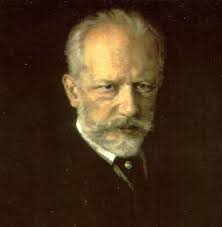
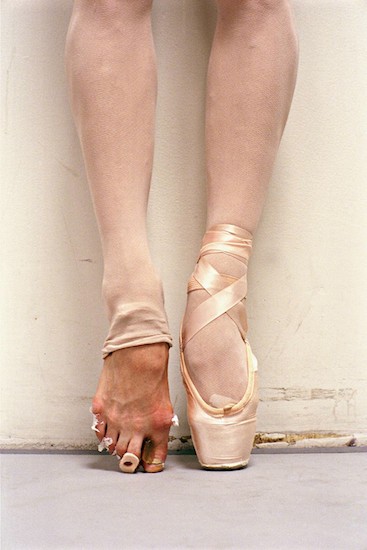

Having been through a particularly painful season, physically and emotionally, the title called to me. I especially loved your paragraph about when experiencing good art “prickles race up my back and down my arms… … They captured their personal glimpse of divinity.”
So beautifully said! It’s the “getting out of ourselves” to experience something so much greater and yes, heavenly.
Love this reply, MarySue! Thanks so much for posting it. I’ll bet you speak for others as well.
As I read this I couldn’t help but to be reminded of what you, as an author, have gone through as well. Yes, as a dancer back in the day but now even more so as you pursue (and reach) your desires to write. While the success may not be overwhelming, I see success nonetheless; and I see…art. Beautifully written upon the pages of hardback books as well as screens upon computers, laptops and phones. Art by Terez Rose.
Donna, I am moved to tears. What a beautiful thing you wrote — it warms me like I can’t tell you. Thank you so much! And thank you for understanding and acknowledging the arduousness (is that even a word?) of my journey as an artist. It’s not an easy calling. But some of us simply can’t not make it our life’s vocation. I’m so grateful for comments like this, that remind me why I’m doing it, and that my art is being seen. Phew!
Great article!
Thank you, W Dawson! So glad you you read it, and offered your comment!
How did I miss this one when it came out?? I love it. I love the way it offers something for both your classical music readers and ballet readers. I also liked your philosophical and spiritual musings.
So glad you eventually discovered it, Jess! As always, nice to hear your comments, as well.